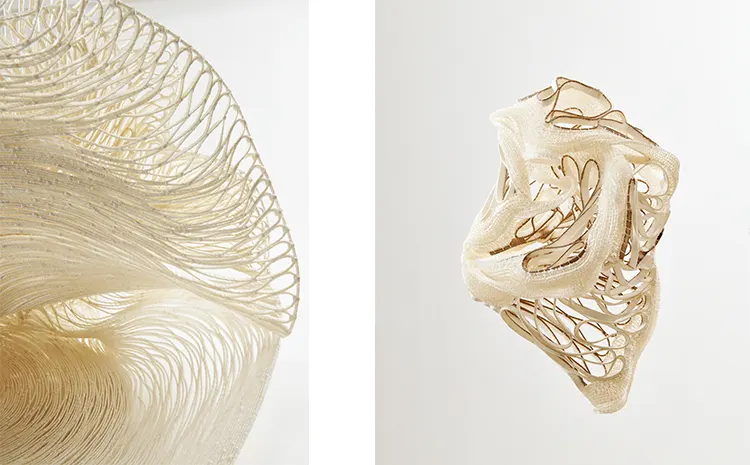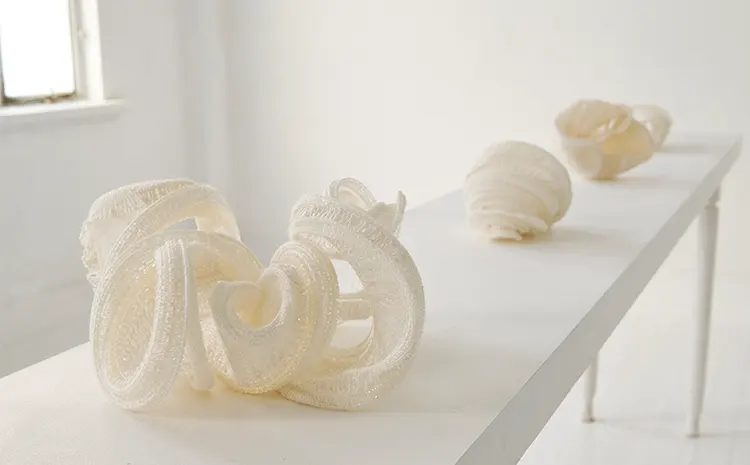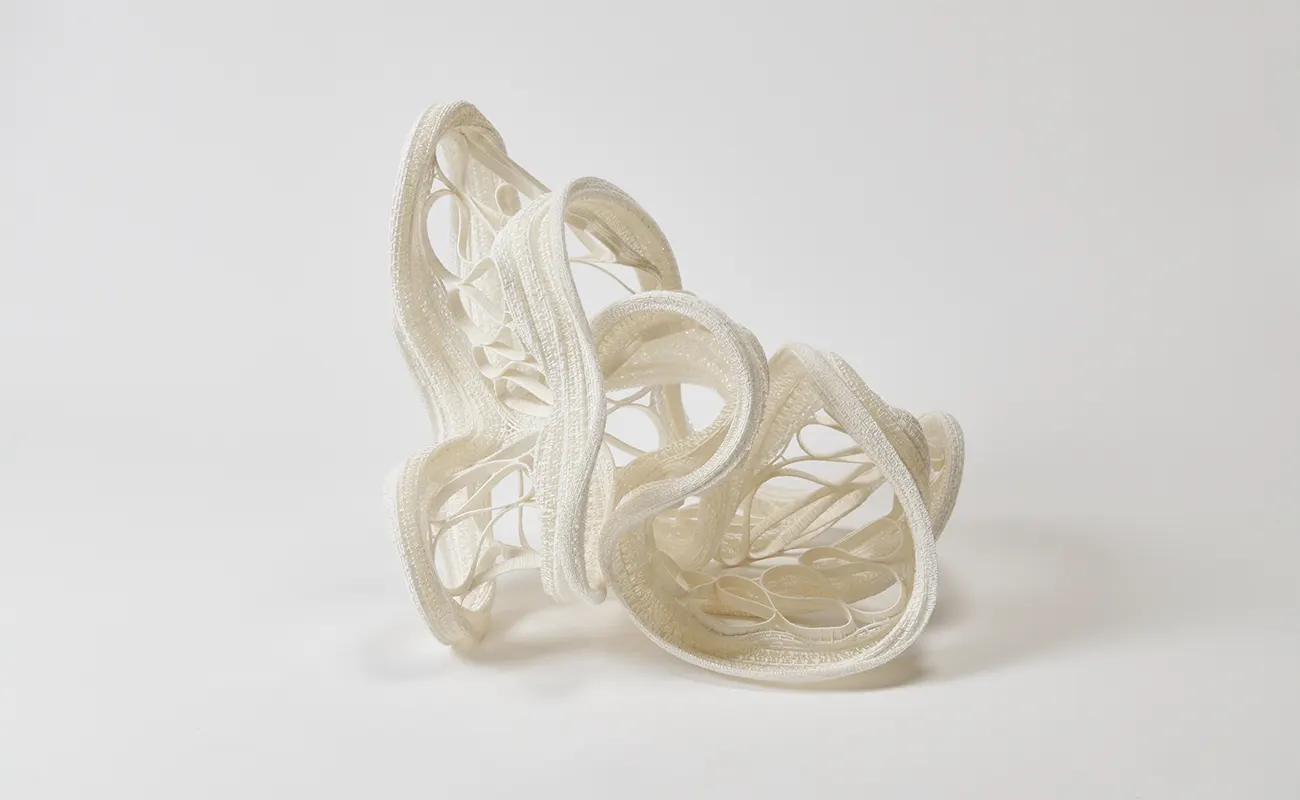“I want to create works that go beyond what I thought of as the domain of basketry.”
Dance of Lines: Fluidity in Movement and Creation
While studying at university, Shoko Fukuda chose drama as her major, with a particular inclination towards abstract contemporary dance—a discipline that explores the immense flexibility of the human body. She was captivated by the unpredictability and improvisational nature of the movements, although her primary focus was on research rather than performance. Although she does not believe this directly impacted her present work, it likely influenced her inclination towards fluid line movements in her creations.
In her artwork, Fukuda delves into the intricacies of basketweaving and the phenomena that arise from the weaving process. For instance, when flat surfaces are woven and fastened together at corners, it results in unanticipated twists and turns, akin to a dance that fully utilizes the body’s physical functions. The artist’s creative process involves deconstructing conventional relationships between materials and weaving methods, akin to solving a puzzle, and then reassembling them around themes such as the twisting phenomenon, ultimately yielding abstract expressions. Although Fukuda’s work is rooted in traditional basketry techniques, she evolves them using experimental approaches.

Shoko Fukuda: A Journey from Inspiration to Unique Artistry
The genesis of Shoko Fukuda’s aspiration to become an artist can be traced back to 1999, during her visit to the “Weaving the World, Contemporary Art of Linear Construction” exhibition at the Yokohama Museum of Art. This pivotal event showcased the work of artists who meticulously crafted pieces by hand, utilizing linear materials such as wool yarn, vines, or metals, through the intricate processes of weaving or knitting. Fukuda was deeply engrossed by the art pieces that delved into the exploration of structure and form, a fascination that propelled her to experiment and cultivate her own unique artistic style.
Informed by the traditional craft of basket weaving, Fukuda’s artistry focuses on the potential of twisting shapes and forms. The inherent resistance of the materials she employs influences her weaving process, ultimately dictating the final form and engendering a rhythmic interplay of lines through repetitive motion. This particular approach enables Fukuda to create continuous and supple curves in space, a hallmark of her artistic oeuvre.
To realize her visions, Fukuda doesn’t use specialized equipment or machinery. Instead, she employs a basic needle and scissors to handle the materials she possesses. Given the three-dimensional nature of her pieces, a space that offers views from multiple perspectives is crucial for her artistic journey.

Reimagining Materials and Techniques
The artistic journey of Shoko Fukuda was profoundly influenced by Hisako Sekijima, an artist she first met over twenty years ago. Sekijima’s expert crafting of plant materials into abstract, three-dimensional structures deeply resonated with Fukuda. This encounter with Sekijima’s work instilled in her a deep appreciation for forms made of linear patterns.
Fukuda is deeply captivated by the natural forms surrounding her, viewing objects like shells, seeds, and insects as intricate 3D artworks. She’s especially attracted to patterns formed by intertwined lines seen in items like electrical wires, vine tendrils, and spider webs. She enjoys observing the flow of these lines. Her choice of materials for her artworks is simple yet unique, including thread, hose, fishing line, plastic wire, and packing paper string. While she draws inspiration from baskets, she purposely avoids traditional basket-weaving materials.
The materials she chooses directly affect her weaving process, with their elasticity and shape influencing the end product. Fukuda is particularly interested in the natural bends that result from weaving flexible materials. In a notable project last year, she collaborated with craftsman Mr. Shinji Saito. They used Urushi lacquer in a way that emphasized the contrast between the lacquer and the fiber, enhancing the surface’s texture and appearance.

Shoko Fukuda: The Continuous Evolution of Craft
Shoko Fukuda has consistently sought to go beyond the traditional boundaries of basketry, even though she crafts each piece by hand. She realized that the size of her works was limited by the reach of her arm as she nestled them on her lap. However, when tasked with creating a larger piece, she took a step back to deeply understand the properties of her materials and the weaving techniques she used. This willingness to adapt and reconsider showed her that even small changes to a familiar method can lead to significant discoveries.
In her creations, Fukuda prioritizes the unpredictable. She chooses materials and techniques, considering their inherent imperfections, transforming them into unique twists and curves. To her, the beauty lies in the interplay between her intent and the natural laws governing her materials.





